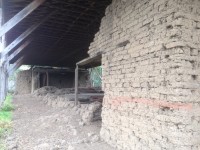I have been known to recklessly pull over at a moment’s notice when I see those telltale metal plaques situated along the side of a less-traveled road. In some instances, despite the cries of my fellow passengers, I have driven miles out of my way to see with my own eyes the location of a historical event significant in our past. With luck, in addition to the plaque, there may be something there to see, but not always.
The State of California has registered over 900 sites as significant in our state’s history. The goal is to “assure that generations to follow will always be reminded of their incomparable history.” Registered sites have been categorized as landmarks and are numbered not in order of their importance, but in the order that the State Historical Resources Commission and the Director of the Department of Parks and Recreation registered them.
California Historical Landmarks include buildings and sites that have statewide significance and have “anthropological, cultural, military, political, architectural, economic, scientific, religious, experimental, or other values.” The State Historical Resources Commission determines whether a property qualifies and the Commission consists of a group of seven members appointed by the Governor.
The Custom House in Monterey, where Commodore John Sloat raised the American Flag on July 7, 1846, has the distinction of being the first resource to be registered as a Landmark in California. Sonoma County has twenty-four Historical Landmarks and ten of them are located within Sonoma’s City limits! Historical Landmarks 3 and 4 are Mission San Francisco Solano and Lachryma Montis, the site of General M. G. Vallejo’s second home in Sonoma. The other Landmarks include the Bear Flag Monument, Blue Wing Inn, Sonoma Barracks, Swiss Hotel, Salvador Vallejo Adobe, Nash Adobe, Union Hotel and Union Hall (Bank of America) and the Samuele Sebastiani vineyard and Winery (San Francisco Solano Mission vineyard).
By contrast, California Points of Historical Interest are buildings and sites of local interest (city or county). These buildings and sites cannot be designated as both, so for example, if a building is given Landmark status, it’s Point designation will be removed from the register. For a resource to be designated a Point of Historical Interest, it must be the first, last, only, or most significant of its type or it must be associated with an important individual or be an outstanding example of an architectural movement or construction.
But wait, there’s more. There are both California and National register designated sites. The National Register of Historic Places is a program that identifies cultural resources worthy of preservation. Authorized under the National Historic Preservation Act of 1966, the National Register supports public and private efforts to identify, evaluate, and protect our historic and archeological resources. Properties listed in the Register include districts, sites, buildings, structures, and objects that are significant in American history, architecture, archeology, engineering, and culture. The National Register is administered by the National Park Service.
California also developed a similar program under the California Environmental Quality Act more commonly known as CEQA. CEQA was established in 1970 and in addition to addressing cultural resources, focuses on various elements of our environment with topics such as biology, geology, noise, aesthetics and traffic. The California Register also encourages public recognition and the protection of cultural resources at the local, state and/or federal levels.
In addition to these various programs, one must not forget GCCRP, a program not formally adopted by the City of Sonoma or any other public agency. GCCRP stands for George’s Coolest Cultural Resources Picks. The criteria for inclusion are simple and are entirely based on the feelings a cultural resource emits. Though already registered a Historical Landmark, a quick survey of the Blue Wing Inn will evoke a feeling of yesterday’s bygone era and it certainly qualifies for listing on the GCCRP.


There are actually 1109 California State Historical Landmarks, and I’ve been to 1067 of them! I have about 800 listed on my site http://www.calandmarks.com, if you’re interested.